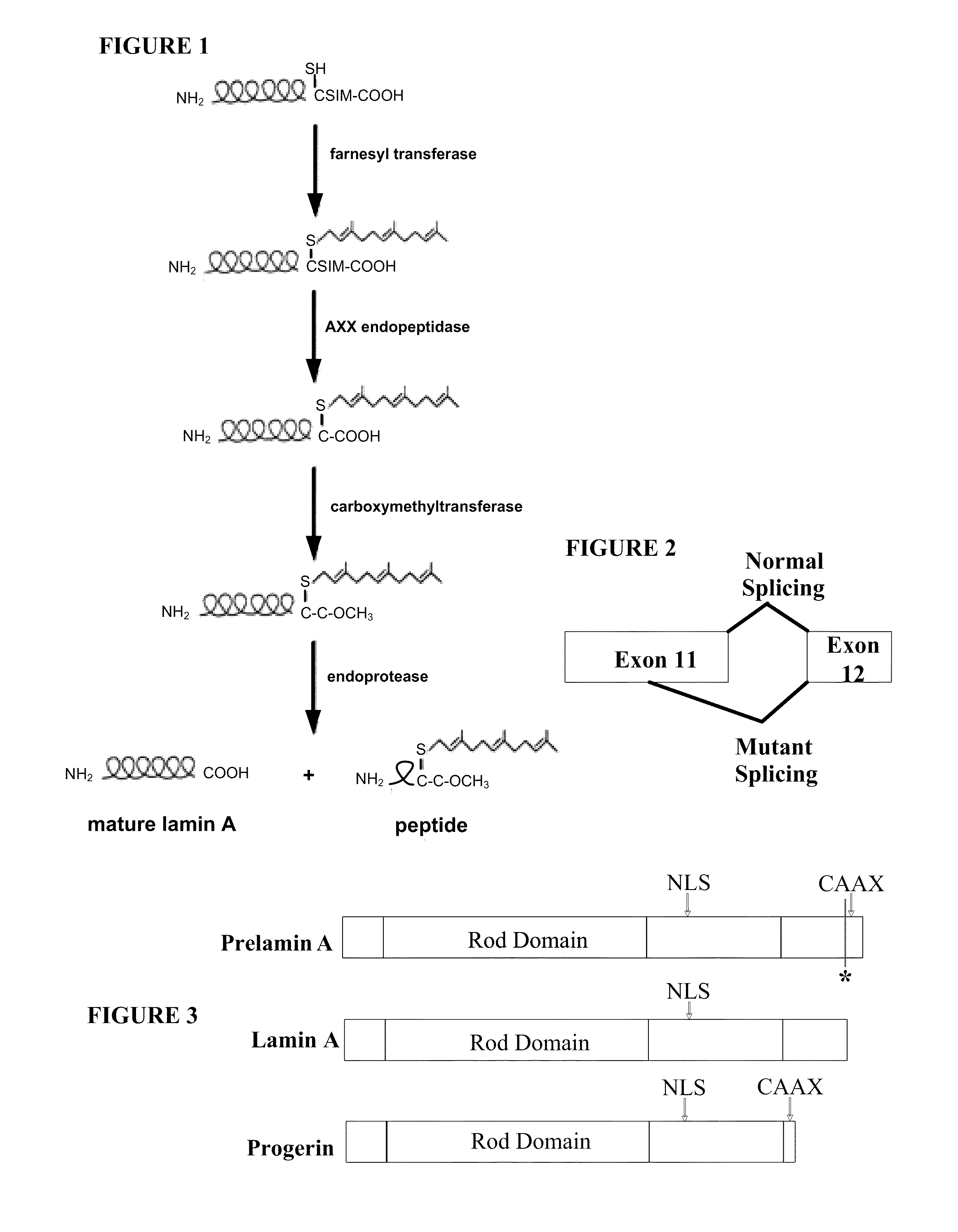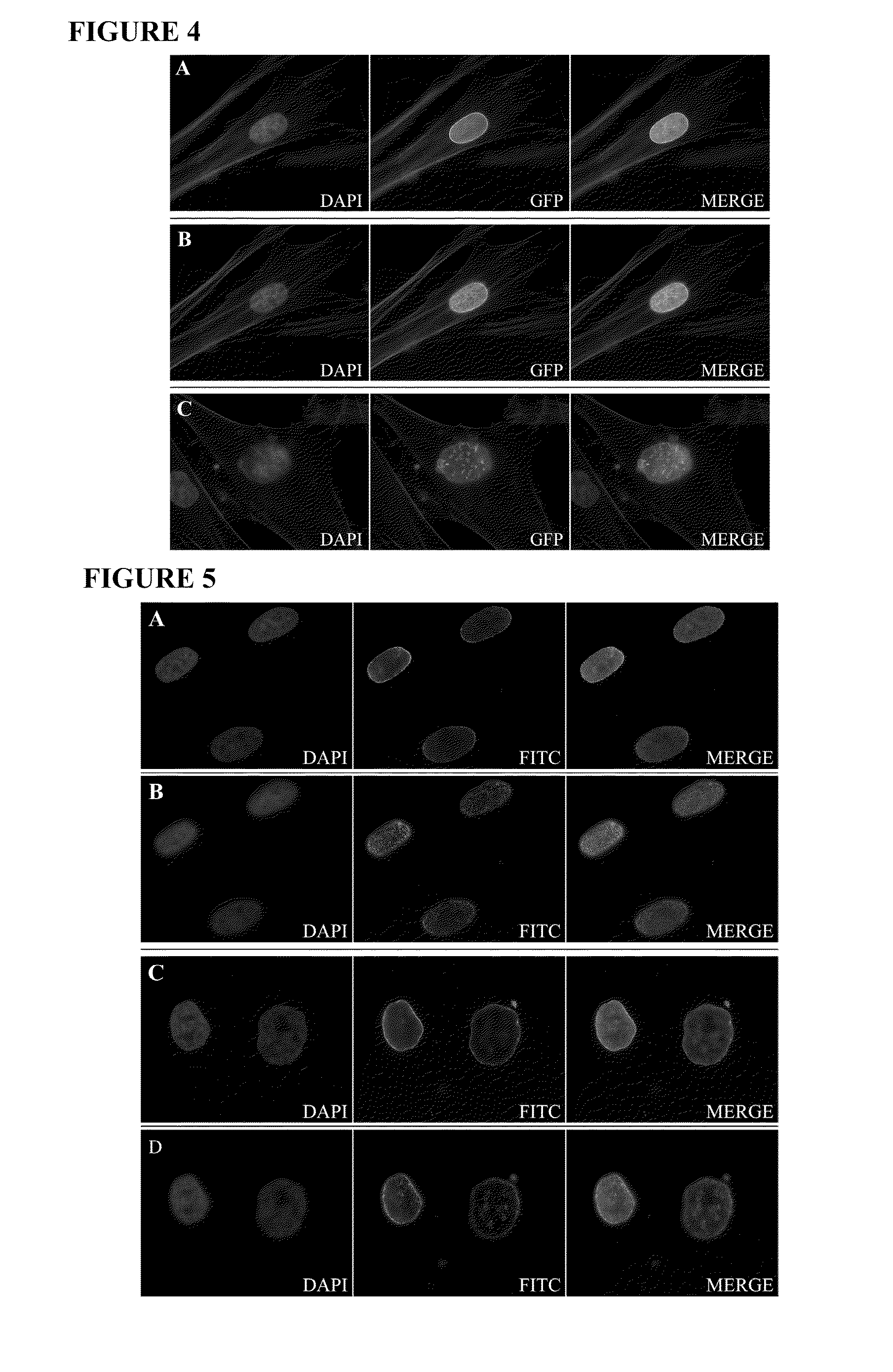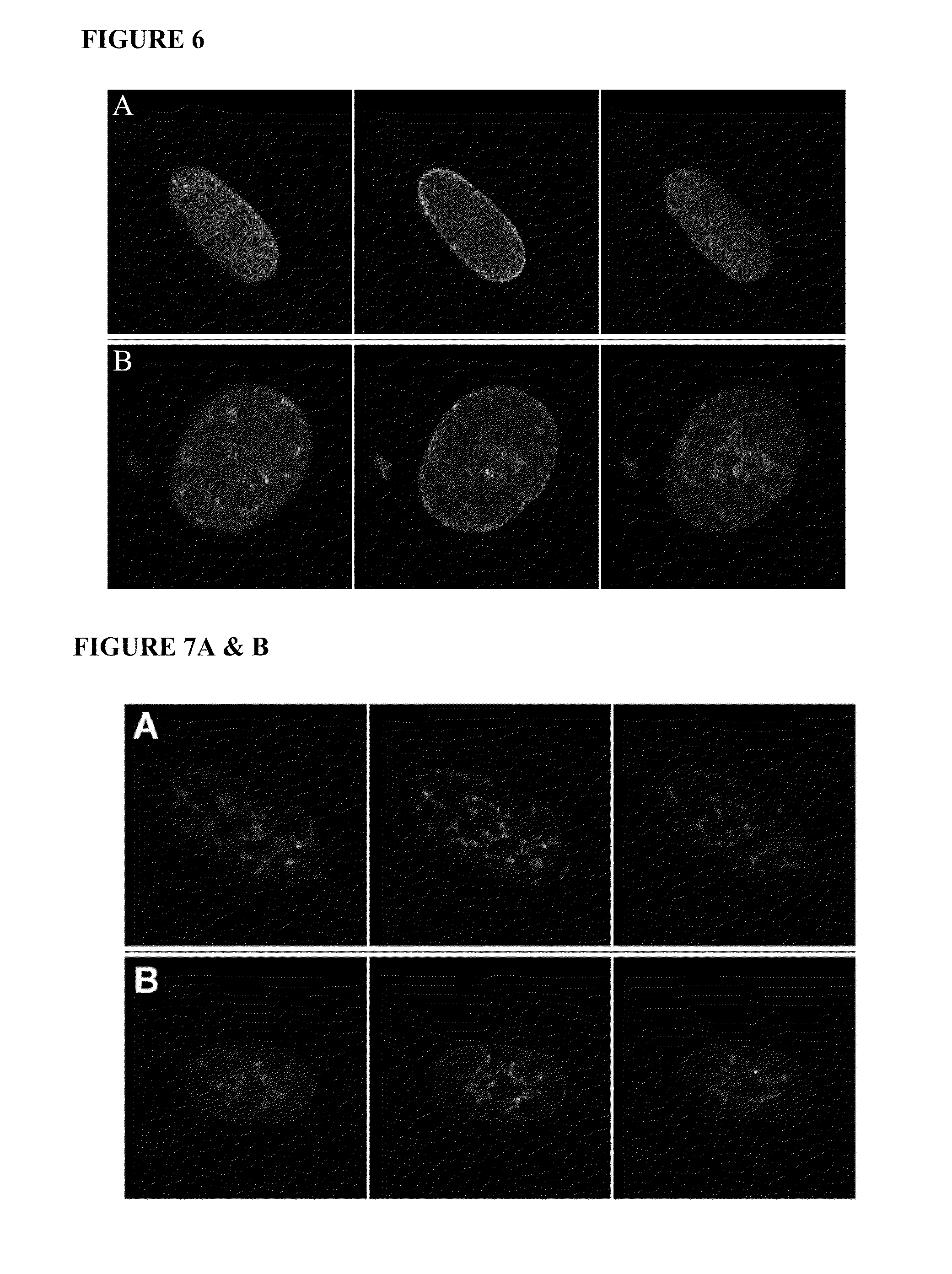Farnesyltransferase inhibitors for treatment of laminopathies, cellular aging and atherosclerosis
a farnesyltransferase and inhibitor technology, applied in the field of laminopathies, cellular aging and agingrelated conditions, to achieve the effects of improving disease status, reducing lamina a protein, and increasing prelamin
- Summary
- Abstract
- Description
- Claims
- Application Information
AI Technical Summary
Benefits of technology
Problems solved by technology
Method used
Image
Examples
example 1
Incomplete Lamin A Processing in HGPS Leads to Nuclear Abnormalities
[0185]This example describes methods for detecting lamin A in cells, and examining cellular characteristics that result from expressing progerin.
[0186]GFP-tagged normal and mutant LMNA expression constructs have been created, and normal and HGPS fibroblasts have been transfected with these constructs in order to examine protein localization and effect on nuclear structure. Expression of the mutant lamin A protein (progerin) in normal fibroblasts caused abnormal nuclear morphology including mislocalization of progerin to foci at the nuclear periphery and nuclear blebbing similar to that seen in HGPS fibroblasts. Expression of normal lamin A in HGPS fibroblasts did not significantly correct the nuclear blebbing phenotype. Furthermore, the normal GFP-lamin A was mislocalized, indicating that the presence of the endogenous mutant can act in a dominant-negative fashion. The progerin deletion could have a number of conseq...
example 2
Cleavage Mutant of Lamin A
[0201]As shown in Example 1, the C-terminus of progerin was not cleaved and the protein remained farnesylated. This example provides the construction of a cleavage-site mutation in lamin A, and compares its processing and cellular effects with those of progerin. Transfection of normal cells with the codon 647 cleavage site mutation construct was found to give rise to similar nuclear abnormalities as those seen in progeria cells. These results indicate that abnormal farnesylation of progerin plays a major role in the abnormal cellular phenotype.
Methods
Creation of Cleavage Minus Mutant
[0202]The L647R mutant was introduced into the pRevTRE-GFP-lamin A construct using a PCR-based site directed mutagenesis. Two overlapping PCR products were generated using the following primer pairs: PCR product 1 using the primers LMNA-1320-For (SEQ ID NO: 3) and LMNA-L647R-Rev (SEQ ID NO: 4), and PCR product 2 using the primers LMNA-L647R-For (SEQ ID NO: 5) and pRevTRE-3700-Re...
example 3
Farnesyltransferase Inhibitor Affects HGPS Nuclear Abnormalities
[0206]This example demonstrates that treatment of cells expressing progerin with a farnesyltransferase inhibitor reverses cellular morphology defects. The FTI used in this example, PD169451, was a gift from Pfizer.
Effect of FTI, PD169451, on Transiently Expressed GFP-Lamin A and GFP-Progerin
[0207]Normal and HGPS fibroblasts were plated on coverslips in 6 well plates 24 hours prior to transfection. Normal fibroblasts were transiently transfected with the GFP-lamin A or GFP-progerin expression constructs using FUGENE®6 transfection reagent (Roche). The following day, the medium was replaced with growth medium containing 0 nM, 100 nM, 500 nM or 1 mM of the FTI, PD169451. Forty-eight hours later the cells were washed two times with PBS (pH 7.2) and fixed for 20 min at 4° C. with 4% paraformaldehyde in PBS containing 62.5 μg / ml LPC palmitoyl and 1 U / ml rhodamine phalloidin (Molecular Probes) to stain the cytoskeleton. Follow...
PUM
 Login to View More
Login to View More Abstract
Description
Claims
Application Information
 Login to View More
Login to View More - R&D
- Intellectual Property
- Life Sciences
- Materials
- Tech Scout
- Unparalleled Data Quality
- Higher Quality Content
- 60% Fewer Hallucinations
Browse by: Latest US Patents, China's latest patents, Technical Efficacy Thesaurus, Application Domain, Technology Topic, Popular Technical Reports.
© 2025 PatSnap. All rights reserved.Legal|Privacy policy|Modern Slavery Act Transparency Statement|Sitemap|About US| Contact US: help@patsnap.com



